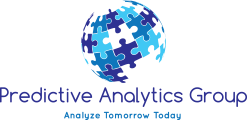In financial services, executives like you face a persistent challenge: making strategic decisions with information scattered across multiple legacy systems. This fragmentation doesn’t just create inefficiency—it directly impacts your bottom line and competitive position.
Beyond Losses Are Increasing
When financial metrics trend negatively, simply acknowledging the problem isn’t enough. Consider collections, where competition drives success. Recognizing that ‘losses are increasing’ provides no actionable intelligence. What you need is precise data showing:
- Which customer segments are contributing most to delinquency?
- Which collection strategies yield better results?
- How performance varies across different products or regions
- Where resources would generate the greatest returns
Without consolidated visibility, these insights remain hidden in disconnected data silos.
The Real Pain of Data Fragmentation
Many financial institutions struggle with two critical challenges:
- Data Source Complexity: Years of growth, acquisitions, and system implementations create a web of disconnected data sources that don’t communicate with each other.
- Visual Reporting Limitations: Even when data can be manually consolidated, creating effective visual reports that communicate clear insights requires specialized expertise.
Consider a regional bank we recently worked with. After acquiring several competitors, they were operating with 11 different legacy systems housing various consumer and system data. Their executives expressed frustration at not having visibility into product performance or the ability to identify emerging trends. Without proper reporting, they couldn’t effectively manage their business.
Consolidated Dashboards: Transforming Data into Decisions
Consolidated reporting isn’t merely about convenience; it fundamentally transforms how financial executives make decisions. By integrating data from various entities into a unified framework, these systems provide:
- Clear Financial Visibility: Consolidated dashboards present a complete picture of your organization’s financial standing. This transparency builds confidence among stakeholders and supports regulatory compliance.
- Strategic Intelligence: Combined data reveals trends and patterns that remain invisible in siloed systems. These insights enable executives to identify opportunities, adjust strategies, and allocate resources effectively.
- Operational Streamlining: Automated data integration eliminates manual errors and frees your team from spreadsheet compilation, allowing them to focus on analysis and action.
- Real-Time Responsiveness: When market conditions shift, waiting days or weeks for updated reports isn’t viable. Consolidated dashboards deliver current information, enabling quick course corrections.
The Collections Competitive Advantage
In collections specifically, consolidated reporting creates a distinct competitive edge. Rather than reacting to losses after they’ve accumulated, financial institutions can:
- Segment delinquent accounts based on behavior patterns
- Implement targeted outreach strategies for different customer types
- Monitor performance metrics in real time
- Adjust resource allocation based on measurable outcomes
- Identify early warning signals before delinquencies escalate
Organizations that leverage these capabilities consistently outperform competitors who rely on generalized approaches.
Experience Makes the Difference
Technology platforms alone aren’t enough to solve complex data challenges. The most effective solutions combine powerful technology with subject matter expertise.
For the regional bank mentioned earlier, we deployed our GOBLIN enterprise data platform to consolidate its disparate data streams into one hierarchical table environment. But the technology was just the starting point. Our team of experts then:
- Created and validated more than 90 customized reports with intuitive data visualization.
- Established automated delivery so executives had reports available by 6 a.m. each day.
- Implemented role-based access controls through the platform’s file share capabilities.
- Provided ongoing support to ensure 99.9% uptime.
The result? In the words of one C-suite executive: “I now feel confident that I can review my KPIs and give instructions to my teams as opposed to worrying if what I was reviewing was actually accurate. I am back to running my business and making decisions.”
Moving Beyond Intuition to Evidence
Successful financial services organizations have traditionally blended analytical rigor with experienced judgment. While executive intuition remains valuable, top performers enhance that judgment with data-driven insights.
Consolidated dashboards don’t replace decision-makers. They augment their capabilities by providing clear, consistent, and comprehensive information. This combination of experience and evidence creates decisions that consistently yield better outcomes.
Building Your Dashboard Strategy
If you’re considering implementing or improving your dashboard reporting, start by asking these questions:
- What decisions am I struggling to make with current data? Identify specific strategic or operational challenges that better data would help solve.
- Who needs which information and when? Map out your key stakeholders and what metrics matter most to their roles.
- Where is our data currently stored? Catalog your data sources, including legacy systems, CRMs, and departmental databases.
- What metrics truly drive our business? Distinguish between vanity metrics and true performance indicators that connect to profitability.
- How quickly do we need to respond to changing conditions? Determine your required reporting frequency based on market volatility and operational needs.
These questions help focus your dashboard development on solving real business problems rather than simply creating attractive visualizations.
Taking the Next Step
Financial executives who want to strengthen their decision-making capabilities need reporting systems that deliver actionable intelligence from their organization’s data. These systems should integrate information from across the enterprise while providing customized views relevant to each stakeholder’s responsibilities.
If you’re ready to explore how consolidated reporting can enhance your organization’s performance, click here to schedule a no-obligation conversation. Our team will discuss your specific challenges and demonstrate how integrated dashboards—backed by genuine subject matter expertise—can transform your decision-making process.
Predictive Analytics Group helps financial institutions bridge the gap between data analysis and impactful business decisions through our proprietary enterprise data platform and expert advisory services.





